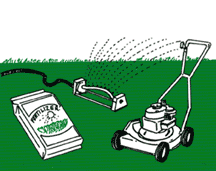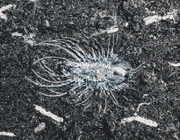|
|
 |
||||||
|
|||||||
Way DownstreamIn Annapolis and Southern Anne Arundel County, the region’s rich tapestry of history is highlighted and organized in the new, full-color map and guide, A History Explorer’s Guide, published by the Four Rivers Heritage Area. One hundred and thirty places to visit — historic sites, buildings and monuments — are linked as five thematic trails: 18th century Annapolis; the rivers and Bay; the legacy of the land; African American life and culture; and religious heritage, represented by churches and cemeteries. The map and guide accompany an updated website — www.fourriversheritage.org — stocked with additional information and a history-related events calendar. $10 by mail: 410-222-1805 … In Maryland, grass grows on some 1.1 million acres, covering 18 percent of the state’s 6.2 million acres, according to a new survey by the U.S. Department of Agriculture’s National Agricultural Statistics Service. Most of the lawns — some 937,000 acres — grow around private single-family homes, with the rest covering school and government property, religious centers, golf courses, sports fields and sod farms. The 2005 survey also reveals how much we What’s all that grass going to do to the Bay? “There’s very little data on this and understanding the impact of turfgrass,” says Smithsonian nutrient ecologist Tom Jordan. “Though we do know that as the amount of developed land increases, so does nitrogen and phosphorus runoff” … On the Eastern Shore, serious birders or folks just hoping to make a feathered acquaintance will get a boost, literally, when the Blackwater National Wildlife Refuge opens its new observatory with elevator on March 10. At the new Wild Birds Unlimited Pathways to Nature Observatory, take in the sights either from a deck or from inside the glass-walled observatory … In Virginia, they don’t seem to have gotten the message from scientists about the long-term threats of planting invasive Chinese oysters in the Bay. The Virginia Seafood Council, which continues to operate with the blessing of the Virginia Marine Resources Commission, wants to cultivate another 1.5 million sterilized ariakensis oysters at 15 locations in the Bay and its rivers. There are 1.3 million growing now, all supposed to be harvested before the new June planting …
Our Creature Feature is a spiky oddball that has arrived from long, long ago — about a half-billion years — thanks to researchers reporting in the new Science magazine. The small invertebrate they’re calling orthrozanclus had no eyes or limbs and was covered in dozens of pointy curved spines. It moved around the ocean floor on a muscular little foot, sort of like a snail. “It’s a tiny beast,” Jean-Bernard Caron, a Canadian researcher, told Reuters. “You probably don’t want to have them in your slippers. They’re kind of spiky.” |
|||||||
|
|
|||||||
|
© COPYRIGHT 2004 by New Bay Enterprises, Inc. All rights reserved.
|
 love green: We spent some $1.2 billion on the production, maintenance and use of turfgrass products and services. Our big ticket items? Lawn care services ($426 million) and labor ($291 million).
love green: We spent some $1.2 billion on the production, maintenance and use of turfgrass products and services. Our big ticket items? Lawn care services ($426 million) and labor ($291 million).